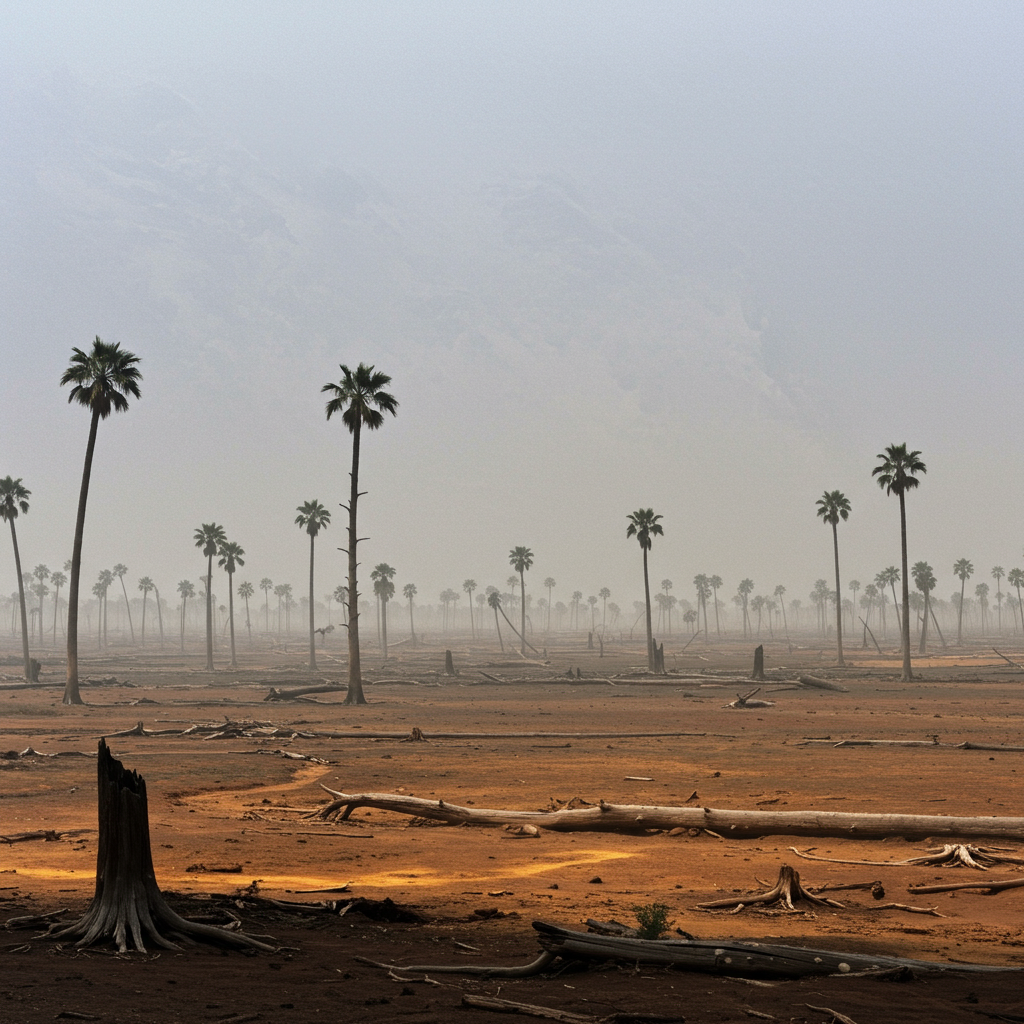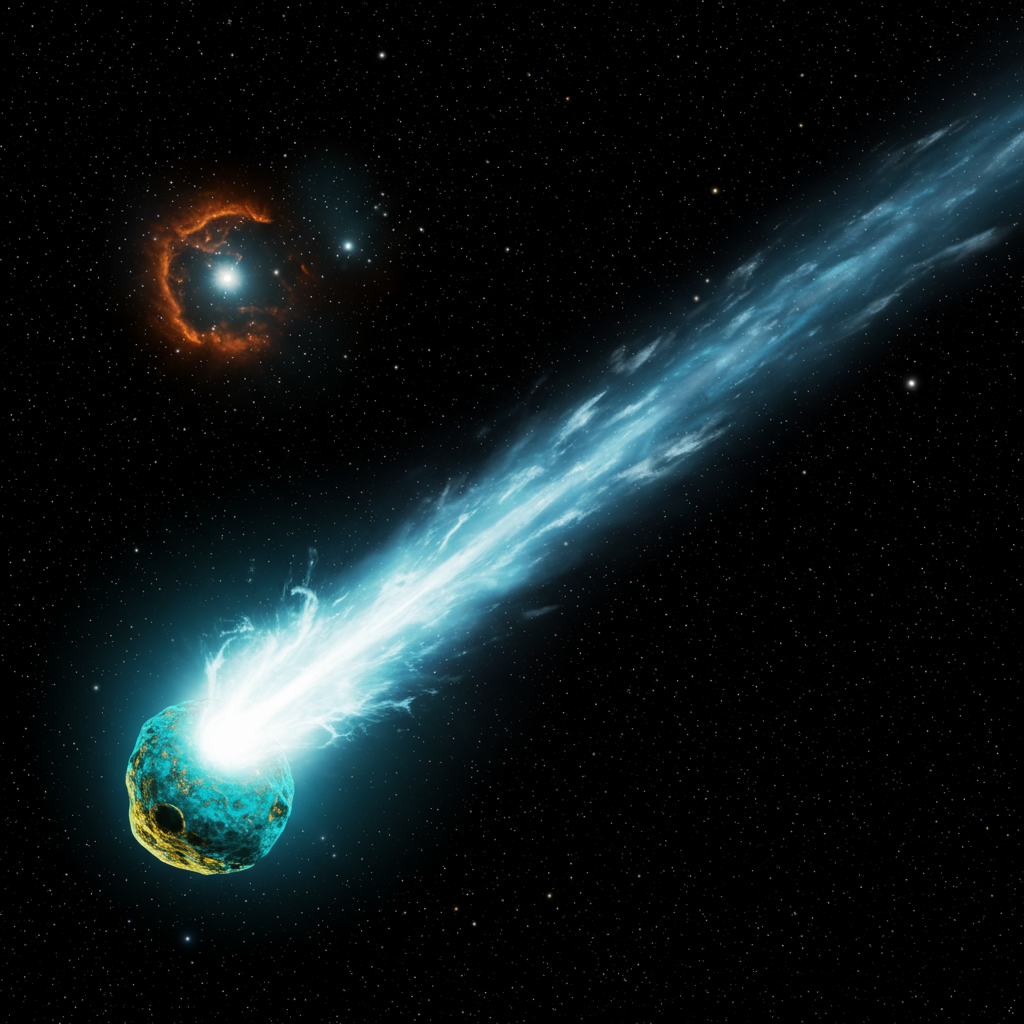Around 252 million years ago, Earth endured the most catastrophic mass extinction event in its history. Known as the Permian–Triassic extinction, or grimly, the “Great Dying,” this period saw an estimated 94% of marine species and 70% of terrestrial vertebrate families vanish. Tropical forests, vital carbon sinks then as now, were decimated. Scientists largely agree this devastation was triggered by a sudden, massive surge in greenhouse gases, leading to rapid global warming. But a puzzling mystery remained: why did the resulting “hothouse” conditions persist for millions of years, long after the initial trigger?
Now, a new study offers a compelling answer published in the journal Nature Communications. The research, co-authored by Andrew Merdith, Benjamin J. W. Mills, and Zhen Xu (the lead author), points to the widespread collapse of Earth’s plant life, particularly tropical forests, as the key factor that trapped the planet in this extreme state for roughly five million years. This finding confirms suspicions that crossing certain climatic tipping points can lead to truly catastrophic and long-lasting ecological collapse.
The Great Dying: A Planet on the Brink
The trigger for the Permian-Triassic mass extinction is widely attributed to immense volcanic activity. Specifically, the eruption of the Siberian Traps, a vast region of volcanic rock in modern-day Siberia, released colossal amounts of molten rock. This molten material erupted into a sedimentary basin rich in organic matter, melting the surrounding rock and unleashing prodigious volumes of carbon dioxide (CO2) into the atmosphere.
This rapid increase in atmospheric CO2, potentially occurring over a period as short as 50,000 years or as long as 500,000 years, caused intense and rapid warming. Land surface temperatures are estimated to have soared by as much as 6°C to 10°C. This rate of change was simply too fast for most life forms to evolve and adapt, resulting in the widespread die-off observed in the fossil record.
In many past warming events caused by large volcanic eruptions, Earth’s climate system typically recovers relatively quickly. Usually, temperatures return closer to their previous state within 100,000 to a million years. However, the Permian-Triassic event was different.
An Unprecedented Prolonged Heatwave
Following the initial extinction pulse, Earth didn’t cool down quickly. Instead, it entered a “super greenhouse” state. Equatorial average surface temperatures reached upwards of 34°C, which was roughly 8°C warmer than the current equatorial average.
Remarkably, these extremely hot conditions persisted for an extraordinary period – approximately five million years. This extended duration of extreme warmth was the mystery that the researchers set out to solve. What mechanism prevented the planet from recovering its climatic equilibrium?
The Research Points to Plant Collapse
The scientists hypothesized that the rapid warming triggered by the Siberian Traps eruption led to the widespread death of vegetation. They suspected that the loss of low- to mid-latitude plant life, especially the vast rainforests, drastically reduced the efficiency of the organic carbon cycle. The organic carbon cycle is Earth’s crucial natural process where plants absorb atmospheric CO2 through photosynthesis and store it as organic matter, effectively removing carbon from the air.
To test this idea, the research team examined the fossil record. They analyzed evidence from a wide range of land plant biomes, including arid, tropical, subtropical, temperate, and scrub environments. They studied how these plant communities changed from just before the mass extinction event until about eight million years after.
Fossil Evidence Reveals a Devastated Landscape
Their reconstruction of plant fossils from fieldwork, historical records, and databases revealed a stark picture. Before the extinction, large areas around the equator were covered in diverse tropical and subtropical forests, including peat bogs. These ecosystems were powerful carbon sinks, actively drawing down atmospheric CO2.
However, the fossil record showed that these tropical biomes were almost completely wiped out from the tropical continents following the rapid warming. This ecological devastation is so pronounced that it left a visible “multimillion year coal gap” in the geological record. Coal forms from accumulated plant matter, particularly large trees found in lush forests and swamps; their disappearance meant no new coal layers were formed for millions of years in these regions.
The once-dominant forests were replaced by sparse vegetation, often dominated by tiny lycopods, which grew only two to 20 centimeters tall. Enclaves of larger plants managed to survive, primarily in cooler regions towards the poles, along coasts, and in slightly mountainous areas where temperatures were more moderate. It took roughly five million years for larger plants to significantly recolonize Earth. However, even these returning plant communities were often less efficient at fixing carbon in the organic carbon cycle compared to the pre-extinction forests.
This transformation is somewhat analogous to replacing vast, carbon-absorbing rainforests with the less dense, lower-biomass flora found in arid or scrubland environments today. The change profoundly altered the planet’s capacity to regulate its atmosphere.
Modeling Confirms the Plant-Climate Link
To quantify the impact of this observed ecological shift, the researchers needed to model the Earth’s carbon cycle. Using data from the present day, they estimated the “net primary productivity” (NPP) for each different biome suggested by the fossil record. NPP represents the rate at which plants take atmospheric carbon dioxide and store it as organic matter.
They then incorporated these estimated NPP rates into a recently developed carbon cycle model called SCION. The model allowed them to numerically simulate the Earth’s climate and carbon cycle dynamics following the Siberian Traps eruptions. When they analyzed the model results, the hypothesis was confirmed.
The initial temperature increase caused by the volcanic CO2 release was indeed sustained for five to six million years. The model demonstrated that the significant reduction in net primary productivity, resulting from the widespread plant die-off, drastically slowed down the removal of CO2 from the atmosphere. It was only as plants gradually re-established across the globe and the organic carbon cycle began to function more effectively that Earth slowly started to ease out of the super greenhouse conditions. The study strongly suggests that the loss of vast plant carbon sinks was the critical factor in prolonging the extreme heat.
Lessons from an Ancient Catastrophe
Drawing direct analogies between past climate change events, which unfolded over tens to hundreds of thousands of years, and present-day changes occurring over decades to centuries is complex. The timescales are vastly different.
However, the Permian-Triassic mass extinction provides crucial insights. It starkly demonstrates that life on Earth, while resilient over vast stretches of geological time, is vulnerable to massive changes occurring on relatively short timescales, such as 1,000 to 10,000 years. The inability of plants to adapt quickly enough to the rapid Permian warming resulted in their extinction across vast areas, fundamentally altering Earth’s carbon cycle.
Overall, the results of this research powerfully underline the immense importance of tropical and subtropical plant biomes and environments. They are not merely habitats; they are fundamental components of Earth’s climate system, playing a critical role in maintaining atmospheric equilibrium through the organic carbon cycle. The study shows how the widespread loss of these biomes can contribute significantly to additional climate warming and act as a devastating climate tipping point, locking the planet into undesirable states for geological timescales. Understanding this ancient event reinforces the urgent need to protect these vital ecosystems in the face of modern climate challenges.
Frequently Asked Questions
What was the “Great Dying” event discussed in the article?
The “Great Dying” is another name for the Permian-Triassic mass extinction event, which occurred about 252 million years ago. It was the most severe extinction event in Earth’s history, wiping out nearly 94% of marine species and 70% of terrestrial vertebrate families. The primary trigger was believed to be massive volcanic eruptions from the Siberian Traps, which released huge amounts of greenhouse gases like CO2, causing rapid global warming.
How did the death of plants cause Earth to stay hot for millions of years after the extinction?
According to the new research, the rapid warming caused by volcanic eruptions wiped out vast areas of plant life, especially tropical and subtropical forests. These forests act as crucial carbon sinks, absorbing CO2 from the atmosphere. Their disappearance drastically reduced Earth’s ability to remove CO2, disrupting the organic carbon cycle. With less CO2 being absorbed by plants, atmospheric greenhouse gas levels remained high for millions of years, trapping heat and prolonging the “hothouse” conditions.
Why is preserving tropical forests today important, based on this ancient event?
The study of the Permian-Triassic extinction highlights the critical role of tropical and subtropical plant biomes in regulating Earth’s climate. These ecosystems are essential carbon sinks that help maintain atmospheric CO2 levels and climate equilibrium. The ancient event showed that the loss of these biomes can act as a significant climate tipping point, contributing to and prolonging warming. Protecting these forests today is vital to prevent similar disruptions to the carbon cycle and avoid pushing Earth towards potentially irreversible warming states.
Word Count Check: 1168




